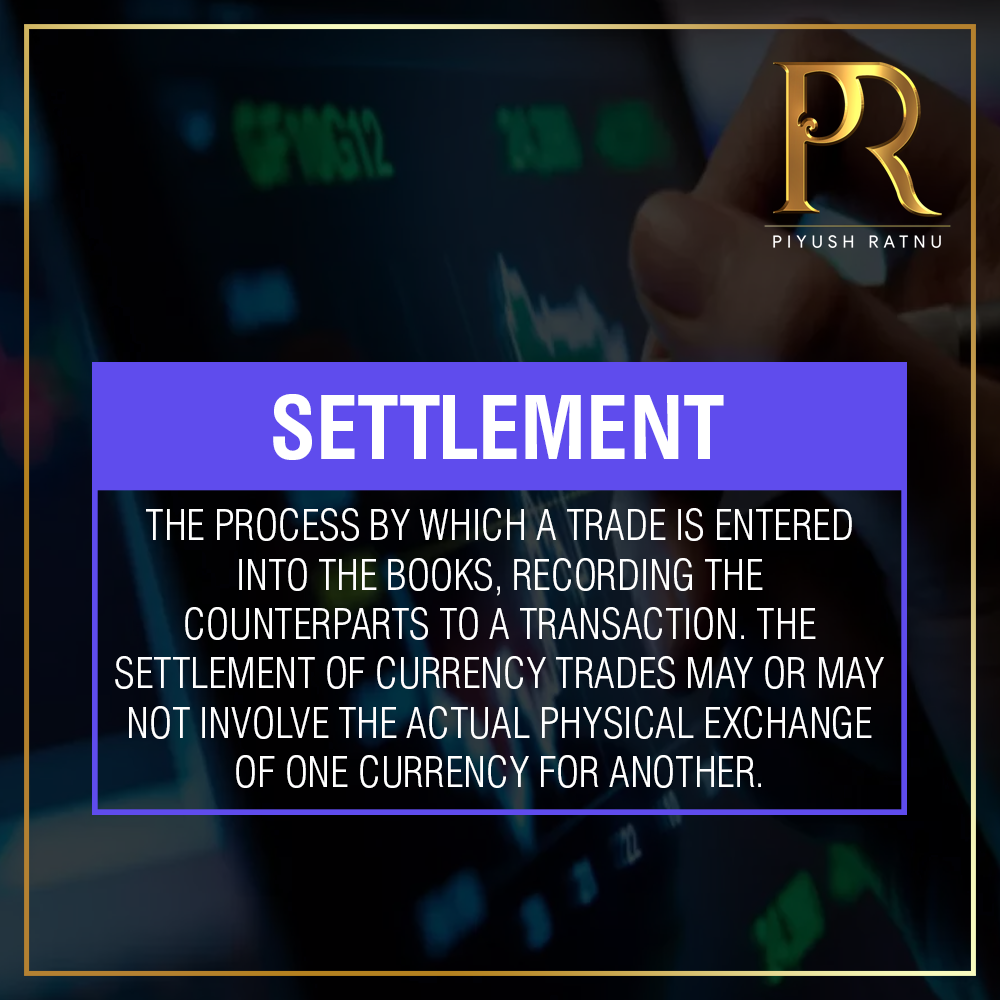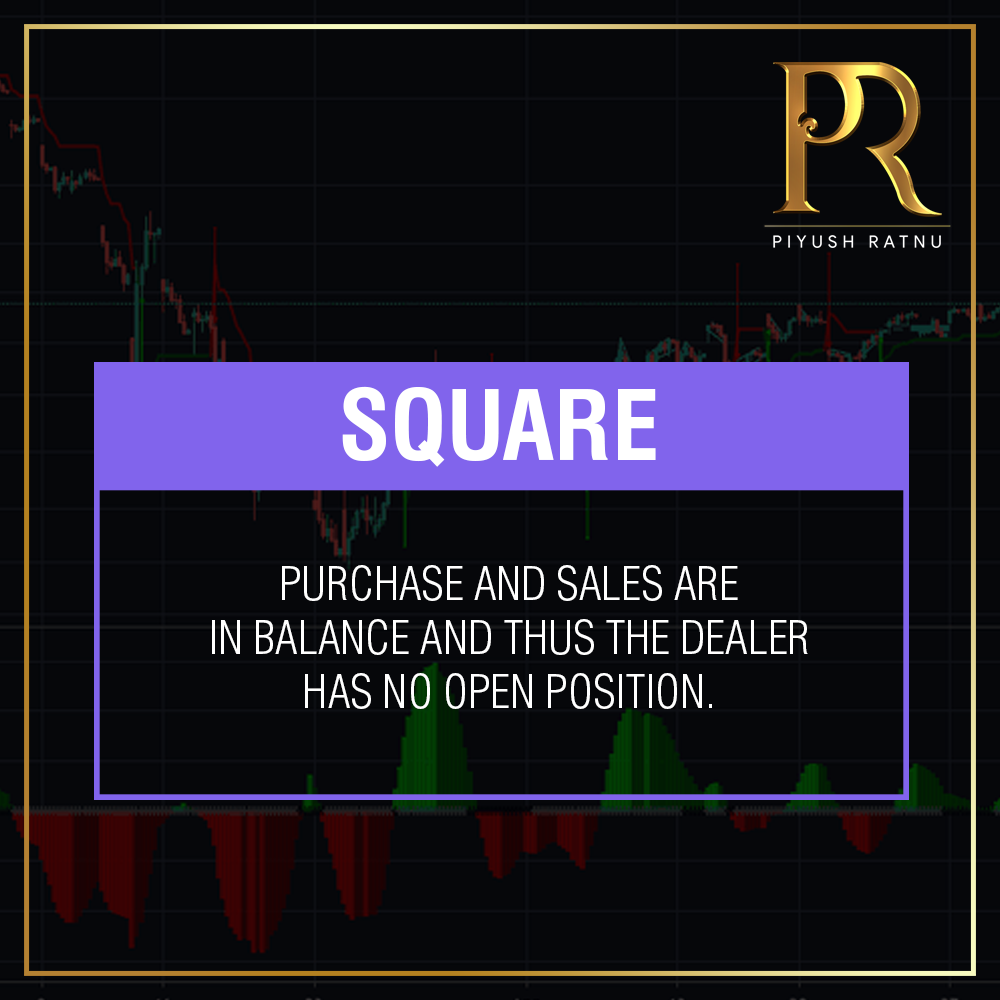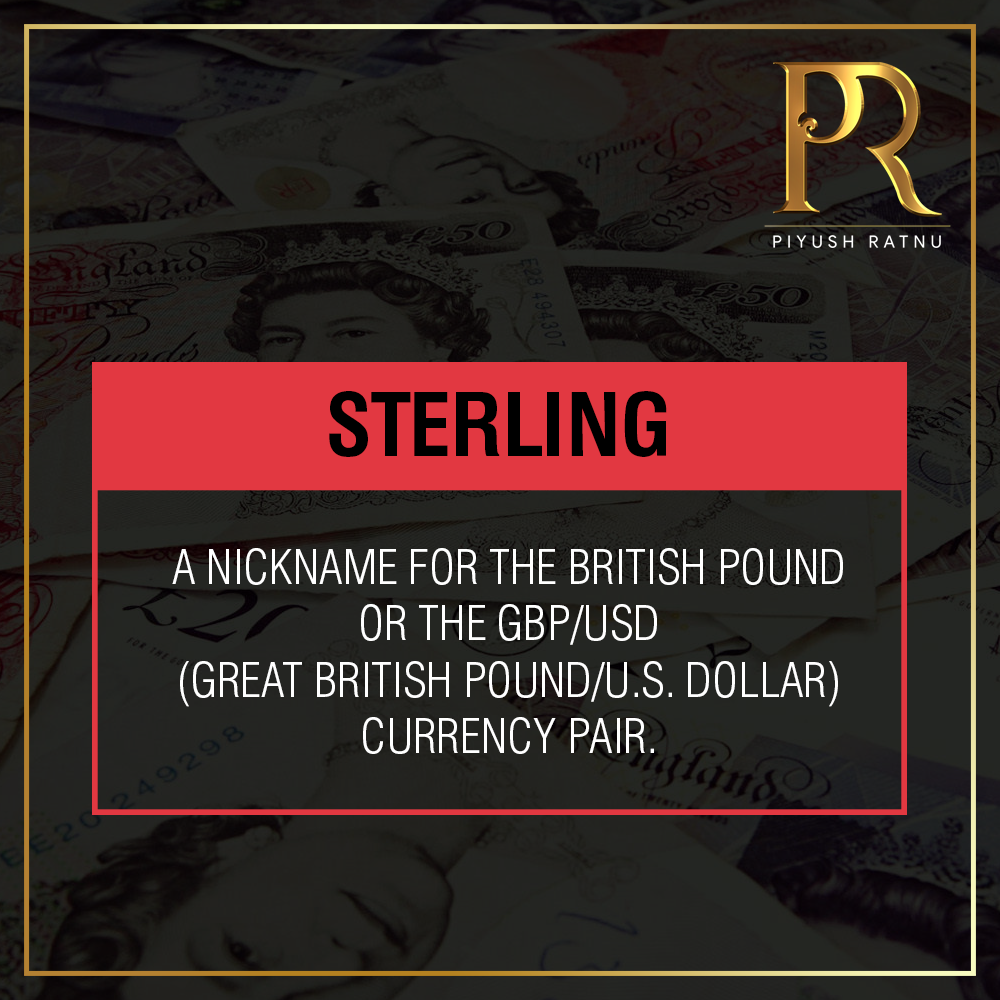SEC: The Securities and Exchange Commission.

SECTOR: A group of securities that operate in a similar industry.

SELL: Taking a short position in expectation that the market is going to go down.

SETTLEMENT: The process by which a trade is entered into the books, recording the counterparts to a transaction. The settlement of currency trades may or may not involve the actual physical exchange of one currency for another.

SHGA.X: Symbol for the Shanghai A index.

SHORT-COVERING: After a decline, traders who earlier went short begin buying back.

SHORT POSITION: An investment position that benefits from a decline in market price. When the base currency in the pair is sold, the position is said to be short.

SHORT SQUEEZE: A situation in which traders are heavily positioned on the short side and a market catalyst causes them to cover (buy) in a hurry, causing a sharp price increase.

SHORTS: Traders who have sold, or shorted, a product, or those who are bearish on the market.

SIDELINES, SIT ON HANDS: Traders staying out of the markets due to directionless, choppy or unclear market conditions are said to be on the sidelines or sitting on their hands.

SIMPLE MOVING AVERAGE SMA: A simple average of a pre-defined number of price bars. For example, a 50 period daily chart SMA is the average closing price of the previous 50 daily closing bars. Any time interval can be applied.

SLIPPAGE: The difference between the price that was requested and the price obtained typically due to changing market conditions.

SLIPPERY: A term used when the market feels like it is ready for a quick move in any direction.

SLOPPY: Choppy trading conditions that lack any meaningful trend and/or follow-through.

SNB: Swiss National Bank, the central bank of Switzerland.

SOFR: The Secured Overnight Financing Rate (SOFR) is the overnight interest rate used for US dollar-denominated loans and derivatives in the overnight market.

SONIA: The Sterling Overnight Index Average (SONIA) is the effective overnight interest rate that banks pay to borrow sterling overnight from other financial institutions. It’s used for overnight funding of trades that occur in off-hours, replacing LIBOR.

SOVEREIGN NAMES: Refers to central banks active in the spot market.

SPOT MARKET: A market whereby products are traded at their market price for immediate exchange.

SPOT PRICE: The current market price. Settlement of spot transactions usually occurs within two business days.

SPOT TRADE: The purchase or sale of a product for immediate delivery (as opposed to a date in the future). Spot contracts are typically settled electronically.

SPREAD: The difference between the bid and offer prices.

SPX500: A name for the S&P index.

SQUARE: Purchase and sales are in balance and thus the dealer has no open position.

STERLING: A nickname for the British pound or the GBP/USD (Great British Pound/U.S. Dollar) currency pair.

STOCK EXCHANGE: A market on which securities are traded.

STOCK INDEX: The combined price of a group of stocks – expressed against a base number – to allow assessment of how the group of companies is performing relative to the past.

STOP ENTRY ORDER: This is an order placed to buy above the current price, or to sell below the current price. These orders are useful if you believe the market is heading in one direction and you have a target entry price.

STOP-LOSS HUNTING: When a market seems to be reaching for a certain level that is believed to be heavy with stops. If stops are triggered, then the price will often jump through the level as a flood of stop-loss orders are triggered.

STOP LOSS ORDER: This is an order placed to sell below the current price (to close a long position), or to buy above the current price (to close a short position). Stop loss orders are an important risk management tool. By setting stop loss orders against open positions you can limit your potential downside should the market move against you. Remember that stop orders do not guarantee your execution price – a stop order is triggered once the stop level is reached, and will be executed at the next available price.

STOP ORDER: A stop order is an order to buy or sell once a pre-defined price is reached. When the price is reached, the stop order becomes a market order and is executed at the best available price. It is important to remember that stop orders can be affected by market gaps and slippage, and will not necessarily be executed at the stop level if the market does not trade at this price. A stop order will be filled at the next available price once the stop level has been reached. Placing contingent orders may not necessarily limit your losses.

STOPS BUILDING: Refers to stop-loss orders building up; the accumulation of stop-loss orders to buy above the market in an upmove, or to sell below the market in a downmove.

STRIKE PRICE: The defined price at which the holder of an option can buy or sell the product.

SUPPORT: A price that acts as a floor for past or future price movements.

SUPPORT LEVELS: A technique used in technical analysis that indicates a specific price ceiling and floor at which a given exchange rate will automatically correct itself. Opposite of resistance.

SUSPENDED TRADING: A temporary halt in the trading of a product.

SWAP: A currency swap is the simultaneous sale and purchase of the same amount of a given currency at a forward exchange rate.

SWISSIE: The nickname for the Swiss franc or the USD/CHF (U.S. Dollar/Swiss Franc) currency pair.

